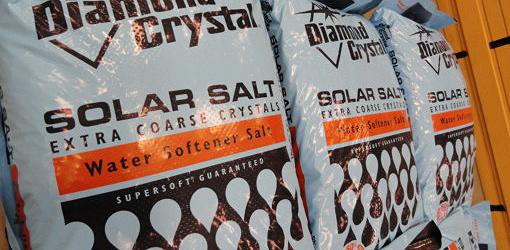Deicers

Sodium Chloride (Rock Salt): This is the cheapest deicing material, but it has a couple of disadvantages since it only works down to 15° F, is damaging to concrete and plants, and unhealthy for pets.
Potassium Chloride: Works similar to rock salt, is better for areas with warmer winters, and is one of the less toxic options.
Street covered in snow
Calcium Chloride: Works at much lower temperatures (down to -20° F) and is less toxic. One advantage of calcium chloride is that it attracts water and creates heat, which means it will actively dissolve ice rather than sitting on top of the ice.
Magnesium Chloride Has similar qualities as calcium chloride but works down to about 5° F.
Urea: Deicers containing urea or chemical fertilizers may seem good for your lawn, but they’re the most corrosive to concrete and the least recommended of all the deicers.
Other Options: There are also a few options for non-chloride based deicers. Safe Paw is an amide-glycol blend that is marketed as salt-free and safe for pets. Calcium magnesium acetate (CMA), is a more environmentally-friendly deicer made from limestone and acetic acid.
Sand and Kitty Litter: Both provide better traction on ice, but won’t actually melt ice.
